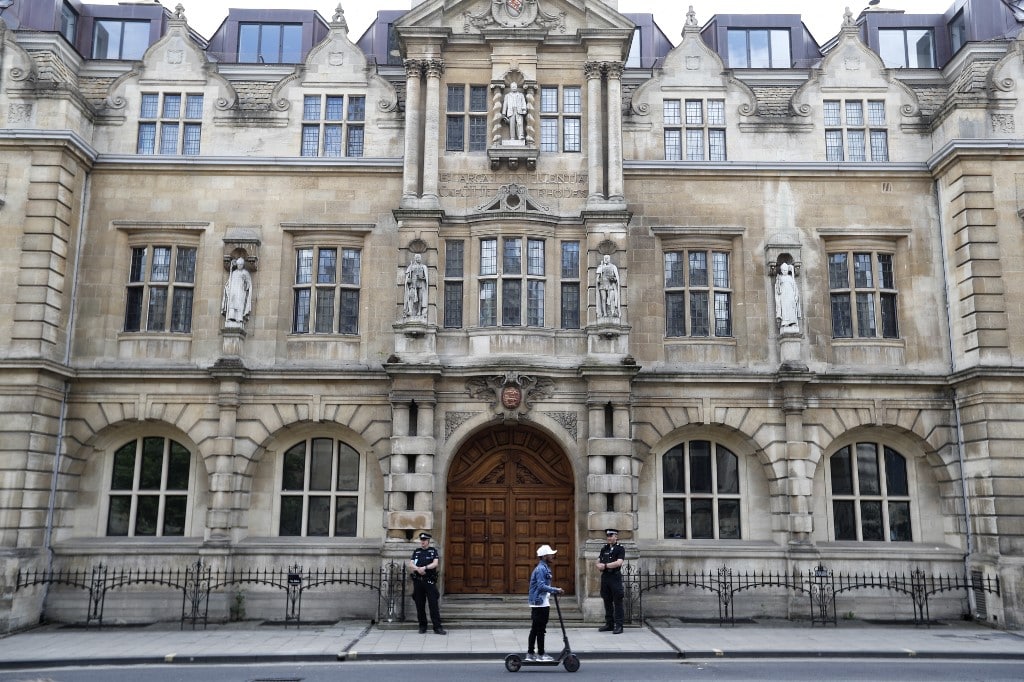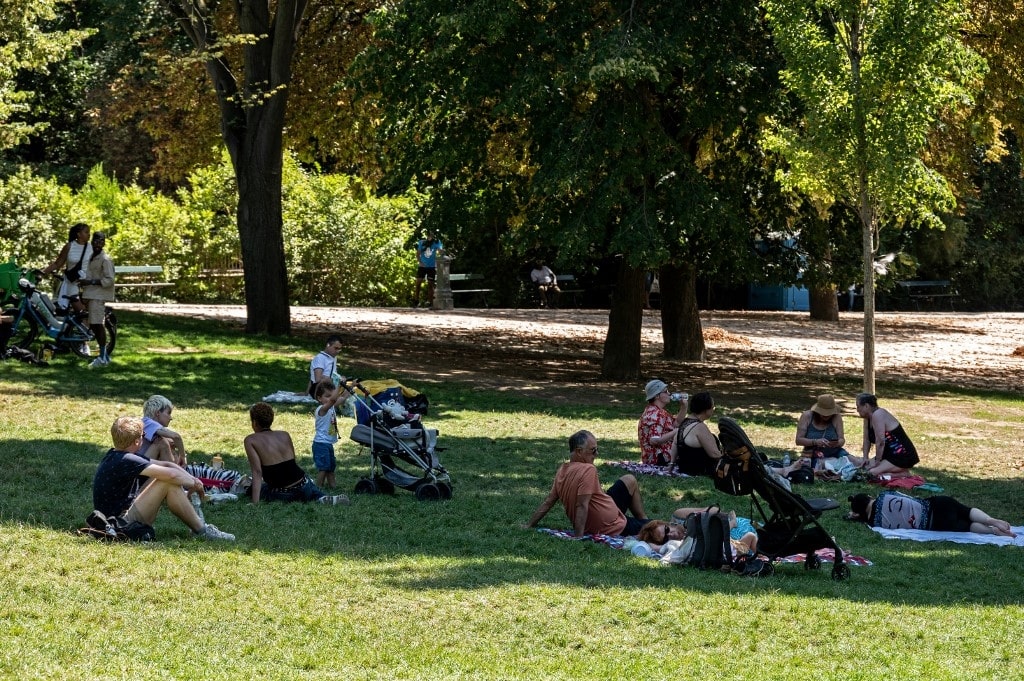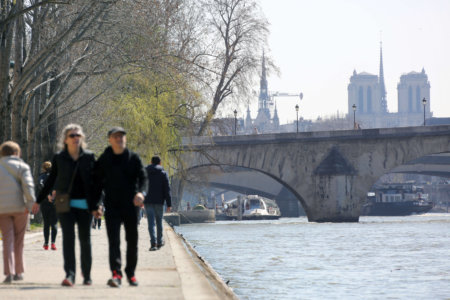
What’s better than living and studying in Europe? Answer: Living and studying in the most friendly cities in Europe.
Speak to any friend, aunty or uncle and many would have gushed about their recent trip to the region that’s the backdrop to iconic series such as “Sherlock Holmes” and “Emily in Paris.”
They’re not wrong about Europe’s beauty and charms — but before you start buying a ticket to London or Paris, it’s important to consider all the characteristics of the European city you want to go to.
And that includes how “friendly” it is — a factor that could make or break your experience there.
“Friendly” is not easy to define. It could mean “acting as a friend” when talking about humans.
Sometimes “friendly” is just a good feeling in a space, from the faces that greet you to the overall vibe that an area exudes.
This makes it highly subjective. Yet, this is a crucial factor in deciding which new city you want to travel, migrate to or study at.
You should dig deeper into what makes a city friendly — which we will do so below.
But before helping you find a European city to study at, how do you know if Europe’s the right place to spend some of the most important years of your life and up to US$100,000 for just the tuition fees of a degree?
Have a look at the list of benefits and downsides of studying in Europe.

Oxford is home to one of the world’s most highly-ranked universities in the world, but as you’ll see below, the city isn’t known to be the friendlies. Source: Adrian Dennis/AFP
The benefits of studying in Europe
- European universities are known for their world-class education. Which country in Europe has the best education system? That depends on the subject matter. While Switzerland might have one of the best business schools, Germany has better universities for engineering.
- Many schools in Europe teach in English, making it easier for an international student to adapt.
- Studying in Europe can be more affordable than in other countries. In France, non-EU students have to pay 189.10 euros per year for a bachelor’s degree in a public university. In Spain, you pay tuition fees according to the credits (roughly 12.50 euros per credit). International students in Sweden are charged about 9,700 euros per year.
- There are also job opportunities should you wish to work in the country after graduating. Many European universities have programmes that encourage students to work with industry experts during their degrees, which gives them the opportunity to network and build connections for the future.
- Travel is easy in Europe. Most countries are a hop, skip and jump away. Even within the continent, you can take the train to explore the many cities on your time off. London to Paris is just two hours away.
- Most European countries are rich in culture and history. From museums and art galleries to ancient landmarks, there is so much to see and learn from.
The downsides of studying in Europe
- The language barrier can sometimes be tricky for international students. In countries like France, the locals expect foreigners to pick up the language quickly or at least try to. Smaller countryside towns may not have a population that is comfortable speaking English.
- Countries like Netherlands, Sweden, and Norway have a high cost of living, and while you may be able to save on the tuition fees, amounts for rent, food, and bills will pile up quite high.
- Sometimes your credits may not transfer. This might mean re-doing courses that you had already completed in your home country, wasting precious time and money.
- Your home health insurance may not cover you while you are studying abroad. This could mean investing in another insurance scheme and spending more money.
The 10 most friendly cities in Europe, according to several rankings
There are many ways to rank the most friendly cities in Europe.
The Conde Nast Traveler’s 2022 Readers’ Choice Awards, the friendliest cities in Europe are assessed by the “overall average levels of satisfaction.” — resulting in the following countries taking top spots:
- San Sebastián, Spain
- Bruges, Belgium
- Reykjavik, Iceland
- Copenhagen, Denmark
- Porto, Portugal
- Dublin, Ireland
- Oslo, Norway
- Lisbon, Portugal
- Stockholm, Sweden
- Amsterdam, Netherlands
Interrail, the organisation behind the all-in-one “Interrail Pass” all-in-one Pass that lets you explore 33 countries by train, also has its own ranking of the most friendly cities in Europe:
- Gothenburg, Sweden
- Stockholm, Sweden
- Porto, Portugal
- Dublin, Ireland
- Berlin, Germany
- Krakow, Poland
- Oslo, Norway
- Copenhagen, Denmark
Both rankings do not have specific measures. Interrail’s ranking is based on “research and personal experience.” They are also the only available rankings on the most friendly cities in Europe.
But a deeper search brought us to Queer.ge’s rankings — which uses more specific measures as it’s targeted towards the LGBT community.
Queer.ge’s version ranks a city on several factors, including “number of LGBT cultural and entertainment events, scale of Pride, hospitality, LGBT community.”
- Berlin, Germany
- Barcelona, Spain
- Amsterdam, Netherlands
- London, the UK
What these three rankings and their varying results show are it’s hard to gauge how friendly a city is. It is highly subjective and dependent on you.

Berlin may be one of the most friendly cities in Europe for the LGBTQ community but not everyone. Source: David Gannon/AFP
5 things that can make a country feel friendly
1. A friendly “feeling”
This can be anything from the pleasant weather and sunshine to how other people perceive you in the street.
It is important not to discount your gut feeling about a place — it’s your inner animal instinct after all.
If you thrive in moody spaces with dramatic pastoral views, a countryside university in the UK might feel friendly, or if you need blue skies and sunshine, Spain would be a more cheerful choice.
Sometimes it’s about how people in the place treat you — the small talk you have with the cashier, the back-and-forth you experience at a cafe or the banter you develop with the bus driver can influence how friendly a country feels.

Does this look like a scene from one of the most friendly cities in Europe? Ask 10 people, and you’ll likely get 10 answers. Source: Sven Nackstrand/AFP
2. Can you fit in?
Fitting in or feeling at home can often make or break your university experience. If you can find people who match your wavelength, the place quickly feels like one of the most friendly cities in Europe.
Sometimes you immediately feel like an outsider in a new city, but that shouldn’t deter you. In fact, that’s quite a normal feeling often followed by homesickness.
I remember visiting Tokyo for the first time and uncomfortably standing out as the only brown face in their business district, but other areas of the city felt warmer and more welcoming.
I would argue that putting in some effort to find friendly spots in a country makes a big difference. You have to be open and friendly yourself to receive that same kindness.
International students tend to find European countries friendlier because of the high percentage of students already studying there.
Eurostat reports that in 2020 that 1.46 million international students were pursuing their tertiary-level studies across the European Union. This makes it easier to find people you have more in common with.

Lean left? You’ll fit in in Amsterdam. Source: Emmanuel Dunand/AFP
3. Safety first
Especially if you are living away from home for the first time, finding a country you feel safe in can certainly influence its friendliness factor.
One way to determine a country’s level of safety is to read online reviews and other students’ accounts. You can also refer to the Numbeo Safety Index which gives current stats (most of Europe has a high rating of 60 and above).
There are a few obvious things to remember as nowhere is perfect. For instance, don’t go walking around at night alone, and stay away from shady and less frequented spaces.
If you are drinking, be mindful of your glass when you put it down and go out with people you trust.
Keep emergency contacts such as the police, hospital, student services, and friends on you at all times. It will be handy if you ever get into an accident or lost.

Amsterdam is one of the most friendly cities in the world thanks to its lack of car traffic. Source: Valeria Mongelli/AFP
4. Easy to get around
The most friendly cities in Europe often are very walkable, with cycling lanes and reliable public transport.
It is easy to take for granted how convenient it is to be able to get somewhere on your own two feet. High-density cities are great because all your needs are met on foot, so you avoid stressing about logistics, especially in a rush.
You should not discount the health benefits of walking regularly and the element of discovery when frolicking around a new country, exploring its hidden gems, and finding memorable spots.
One of the biggest concerns with larger cities is the impact traffic has, from posing as a danger to air and noise pollution. It makes living in this kind of space feel unfriendly and difficult.
Compare this to countries like the Netherlands, where cycling is the main mode of transport, cutting back on overall pollution and making roads more accessible for pedestrians.

Many of the most friendly countries in Europe have pockets of green spaces for people to enjoy. Source: Bertrand Guay/AFP
5. Spaces for community
On the same lines as its walkability, the most friendly cities in Europe also have big green spaces for the public to spend time.
From a sustainability standpoint, gardens, parks, and pockets of green spaces are good for the environment as well as our overall health.
It’s healthy to be out in nature as it can improve your mood — another positive boost that can make us feel we’re in a friendly city.
Even something as simple as benches in public spaces can also boost a country’s friendliness factor. Urban furniture encourages strangers to share a space and perhaps interact with one another.
Picture the scene: an urban space littered with trees and uniquely shaped and comfortable benches, filled with people enjoying the sunshine and passing buskers.
Some chit-chat amongst themselves, some exercising and some just taking in the lovely day. What could be friendlier?

Some consider the UK one of the most friendly cities in Europe. Source: Loic Venance/AFP
So, how do you pick the right university in Europe?
Start with your degree and think about what you want to do with your life. Consider the kind of person you are: are you an introvert with a longing for nature escapes or an extrovert who needs a number of activities to keep them occupied?
Prospective students often want to know where is the best place to live as a student or which European country has the best student life.
However, that comes down to how you would define a good student life.
If you like partying and drinking, many would recommend the UK. There are lists out there that rank London as the number one choice, but there are those who would disagree citing safety issues.
If you prefer a smaller city or town, perhaps consider an Irish university. For some, a smaller community is easier to navigate.
If you want to be in a city with character that is filled with artistic expression and vibrant people, I would recommend Glasgow, specifically the University of Glasgow.
While we have been able to show why the most friendly cities are in Europe, deciding the best university experience for you comes down to your individual preferences.










